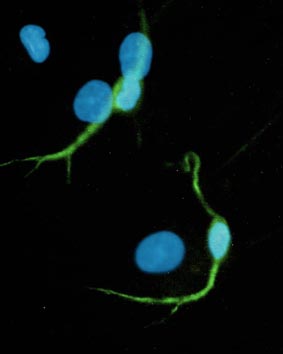 Ever
since the research on "cloning" created excitement (or flutter)amongst
scientific community, there have always been different arguments in
favour of and against the research in this concept. Fearing that cloning
research would lead to more harm/chaos than what it is projected for,
even non-scientists raised objections to this research. Whereas the
scientific community assured the world that the advancement in stem
cell research would help in curing chronic diseases (heart/brain/liver/skin)for
which the medical world does not have an answer.
Ever
since the research on "cloning" created excitement (or flutter)amongst
scientific community, there have always been different arguments in
favour of and against the research in this concept. Fearing that cloning
research would lead to more harm/chaos than what it is projected for,
even non-scientists raised objections to this research. Whereas the
scientific community assured the world that the advancement in stem
cell research would help in curing chronic diseases (heart/brain/liver/skin)for
which the medical world does not have an answer.
What is a stem cell?
Before the disclosure by Catherine M Verfaillie, a scientist from
University of Minnesota about her discovery of "adult stem cells",
scientists could do the stem cell research using only the "embryonic
stem cells". Embryonic stem cells are more new cells for one specific
tissue. This was the drawback of adult stem cells and precisely for
this reason, embryonic stem cells attracted much attention as they
are more versatile than the adult stem cells known to scientists before
this new invention.
However, the recent invention by Verfaillie claims that the new adult
stem cell can turn into many different types of cells. The new invention
is about a particular adult stem cell isolated from the bone marrow.
This can be converted into cells of the heart muscle, brain, liver,
or skin depending on which tissues need to be repaired. This can be
extracted from the bone marrow of the patient and it does not need
to be from anybody else's marrow or from an embryo. This is the significance
of this new invention.
More importantly, this particular adult stem cell from bone marrow
show a striking property with embryonic stem cells. The potency/versatility
of this adult stem cell need to be established vis avis the embryonic
stem cells as mentioned earlier. It must be interesstem cells maintain
the various tissues of the adult body.
There are hypothesis around this discovery. A section of scientist
say that a small population of embryonic stem cells lingers on in
the adult, morphing into various types of adult stem cells as needed.
Another section of scientists feel that somehow the scientist who
discovered this new adult stem cell in bone marrow could have succeeded
in reprogramming the cells back to a semi-embryonic state and that
is why they show such a remarkable versatility. The inventor calls
it as "multipotential adult progenitor cell" and does not want to
call them as "ultimate stem cell". She acknowledged that these adult
stem cells has some of the markers characteristic of embryonic stem
cells. For more details on this invention, readers are advised to
go through an article on this in a recent issue of New Scientist.
(courtesy: NYT News Service & New Scientist)

